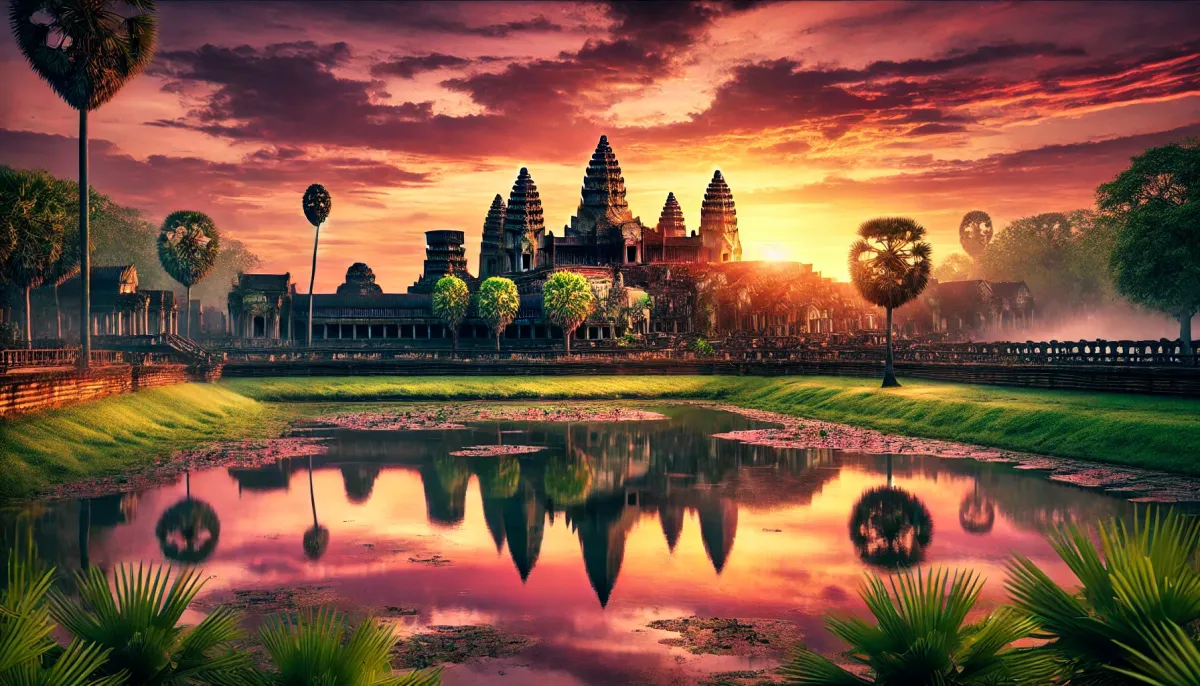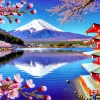As an avid backpacker, I've always been drawn to the allure of ancient civilizations and the stories they whisper through crumbling ruins. My recent trip to Cambodia was nothing short of extraordinary, a captivating journey through time that left me awestruck by the grandeur of the Khmer Empire. From the majestic Angkor Wat to the enigmatic Ta Prohm, Cambodia offers a glimpse into a world shrouded in mystery and steeped in rich history. This is a must-see destination for any traveler seeking adventure and cultural immersion.
Angkor: A City of Temples
My exploration began in Angkor, the heart of the Khmer Empire. The first stop was the magnificent Angkor Wat. The entrance, adorned with carvings of King Jayavarman VII's face, symbolizes the omnipresent Hindu god, Brahma. Stepping inside, I was immediately struck by the sheer scale and intricate detail of the stone carvings adorning the walls.
Next, I ventured to the Bayon temple, a fascinating structure composed of 54 towers. While some sections are in ruins, the overall effect is quite remarkable. Each tower bears the smiling face of the king, earning this place the moniker "Khmer Smile." Climbing the uneven stone surfaces for a panoramic view was a bit of a challenge, but the breathtaking vista was well worth the effort.
From the Baphuon Palace, the ancient royal road stretched out before me, evoking images of emperors of old. I also visited the ancient courthouse, its circular layout reminiscent of a chessboard, perhaps symbolizing the people's subjection to the law. The Elephant Terrace, a platform where kings once chose their royal mounts, offered a glimpse into the grandeur of ancient Khmer ceremonies.
Beyond Angkor: Exploring Hidden Gems
My journey continued to the enchanting Banteay Srei, also known as the "Citadel of Women." This temple, constructed of red sandstone, is a testament to the artistic prowess of the Khmer people. The intricate carvings and delicate details are simply breathtaking. I highly recommend researching the temple's history and significance beforehand to fully appreciate its beauty.
Next, I explored the Ta Som temple, where a massive tree has enveloped the eastern gate, creating a surreal and captivating scene. The Preah Khan temple, still partially overgrown by jungle vegetation, provided a sense of adventure and discovery. I also visited Neak Pean, a small island temple in the middle of a man-made lake, and the impressive East Mebon temple.
Local Life and Cambodian Culture
Throughout my journey, I had the opportunity to interact with the warm and welcoming Cambodian people. I encountered children selling souvenirs and locally grown fruit, demonstrating their resourcefulness and entrepreneurial spirit. I even witnessed a local ice cream vendor with a setup reminiscent of traditional Taiwanese ice cream carts.
A boat trip on Tonle Sap Lake provided insight into the lives of those who depend on fishing for their livelihoods. I observed floating villages and schools built through donations, highlighting the importance of education in this community. The sight of dried crocodiles for sale was a bit jarring, a reminder of the exotic nature of this region.
My driver shared anecdotes about encountering transgender individuals and explained how to discern their gender based on physical characteristics, a glimpse into local customs and perceptions. I also noticed children selling a variety of dried goods at local markets, adding to the vibrant tapestry of Cambodian life.
| Site | Key Features |
|---|---|
| Angkor Wat | Intricate carvings, vast scale, symbolic architecture |
| Bayon Temple | Smiling faces of the king, 54 towers |
| Baphuon Palace | Ancient royal road, panoramic views |
| Ancient Courthouse | Circular layout, symbolic of law and order |
| Elephant Terrace | Platform for selecting royal mounts |
| Banteay Srei | Red sandstone, intricate carvings |
| Ta Som | Tree-covered eastern gate |
| Preah Khan | Overgrown by jungle vegetation |
| Neak Pean | Island temple in a man-made lake |
| East Mebon | Impressive temple structure |
The Importance of Preservation
Cambodia's rich cultural heritage is under constant threat from natural elements and the passage of time. The presence of UNESCO World Heritage status is crucial in protecting these sites and promoting sustainable tourism. Witnessing the ongoing restoration efforts, particularly at the Chau Say Tevoda temple, underscored the importance of preserving these ancient wonders for future generations.
My Cambodian adventure was truly an unforgettable experience. The breathtaking temples, the vibrant culture, and the resilience of the Cambodian people left an indelible mark on my soul. I highly encourage fellow travelers to explore this captivating country and witness its wonders firsthand.







